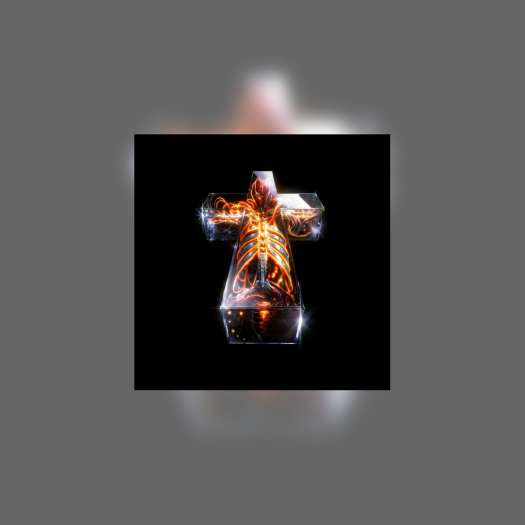The world of neighbouring rights is probably foreign to a lot of musicians. Terms like tariff, copyright collective, reciprocal agreement, and others aren't very sexy, and the message about what exactly a neighbouring right is can be confusing. But there's money there for anyone who's involved in the creation of broadcasted music, so it's an important topic to understand.
Simply put, "neighbouring rights" (aka equitable remuneration) refers to a series of rights for performers and master owners that entitles them to receive revenue when their music is performed. Still confused? Let's put it another way...
Songwriters have long collected money (in Canada, through SOCAN) for the public performances of their songs. Any time a song is broadcast on terrestrial radio, satellite radio, in a mall, or elsewhere, the songwriter gets a royalty. The broadcaster or venue pays a license fee to SOCAN, reports what songs are played, and the writer(s) and publisher(s) of those songs get their share.
Neighbouring rights are essentially the same thing, but instead of being attached to the composition, they're attached to the sound recording itself. It's the performers and sound recording owners, not the songwriter(s) or publishers(s) who benefit from the "performance" of that recording. Performers are defined as anyone who performs on the recording (members of the band, background players, etc); sound recording owners are those who own or control the rights to exploit the recording, usually the label.
So let's say you're a bass player in a band, and one of the songs you play on gets played on radio. If you were one of the writers, you'd be eligible for SOCAN composer royalties. But even if you weren't, you'd still eligible to collect neighbouring rights revenue as a performer. Additionally, if you're one of the master owners, you're also eligible for the label's share of neighbouring rights royalties.
In Canada, neighbouring rights didn't exist before 1997, when the Copyright Act of Canada was amended, and the Neighbouring Rights Collective of Canada (NRCC) was born. The NRCC was founded so that performers and master owners received the same rights and revenues as songwriters. It included several organizations as its members: ACTRA RACS, AFM (aka the musicians' union, recently re-branded CFM), Artisti, AVLA, and SOPROQ. The NRCC was renamed "Re:Sound" in 2010, eliminating one acronym but not the confusion surrounding the rest.
So, Re:Sound is the overall "umbrella" organization, but it's the other organizations themselves that you need to deal with in order to receive royalties. If you're a performer, Re:Sound lists three organizations as options: ACTRA RACS, Artisti (Quebec), and MROC. (The CFM used to list neighbouring rights collection as one of their services but they've recently handed the torch to their off-shoot MROC.) You don't have to be an ACTRA or CFM member to received royalties through ACTRA RACS or MROC.
As a master owner, the choices are much easier: AVLA if you're in English-speaking Canada, and SOPROQ if you're in French-speaking Canada.
When registering your works with any of these organizations, you're assigning them the right to collect your neighbouring rights royalties for you. No copyright ownership or anything of the like is granted to them, so you don't need to worry about losing any ability to exploit your music.
That's the who, but what's the what? Much like SOCAN, neighbouring rights are collected for commercial radio broadcast, CBC radio broadcast, pay audio (i.e., TV radio stations), satellite radio broadcast, and background music broadcast. All of these music users are subject to tariffs, which are filed by Re:Sound and imposed by the Copyright Board.
Re:Sound also administers something called the Private Copying levy. When the general public starting making private copies of CDs (originally cassettes), a levy was placed on all blank CDRs to compensate the people involved in making the music. The performers and masters share of that levy is also considered a neighbouring right, and is distributed by the same organizations mentioned above.
All of these organizations have reciprocal agreements with other countries where neighbouring rights are acknowledged. Unfortunately, the U.S. doesn't currently have a federal law for neighbouring rights. Therefore, performers can join SoundExchange to get sound recording performance royalties from digital music services, and Recording Artist Royalties (which is related to the AFM and AFTRA) which distributes home taping royalties in the U.S. and performance revenue from other territories.
An important point: when it comes to performers being paid their share, Canadian organizations split up the royalties between "featured performers" and "background performers" in an 80/20 split. SoundExchange, however, only pays royalties to featured performers.
Many performers see neighbouring rights as simply a "bonus," which is a shame, because the royalties rightfully belong to the performers and master owners themselves. RACS specifically has money that's "simply sitting there," waiting to be claimed by performers, and no doubt, the other organizations do too.
As a performer and a master owner, you have organizations that will help you collect the money that's rightfully yours. Understanding these rights and how to collect that revenue is essential to long term career success.
Scott Honsberger is a consultant and founder of music industry blog Your Band's Best Friend.
Simply put, "neighbouring rights" (aka equitable remuneration) refers to a series of rights for performers and master owners that entitles them to receive revenue when their music is performed. Still confused? Let's put it another way...
Songwriters have long collected money (in Canada, through SOCAN) for the public performances of their songs. Any time a song is broadcast on terrestrial radio, satellite radio, in a mall, or elsewhere, the songwriter gets a royalty. The broadcaster or venue pays a license fee to SOCAN, reports what songs are played, and the writer(s) and publisher(s) of those songs get their share.
Neighbouring rights are essentially the same thing, but instead of being attached to the composition, they're attached to the sound recording itself. It's the performers and sound recording owners, not the songwriter(s) or publishers(s) who benefit from the "performance" of that recording. Performers are defined as anyone who performs on the recording (members of the band, background players, etc); sound recording owners are those who own or control the rights to exploit the recording, usually the label.
So let's say you're a bass player in a band, and one of the songs you play on gets played on radio. If you were one of the writers, you'd be eligible for SOCAN composer royalties. But even if you weren't, you'd still eligible to collect neighbouring rights revenue as a performer. Additionally, if you're one of the master owners, you're also eligible for the label's share of neighbouring rights royalties.
In Canada, neighbouring rights didn't exist before 1997, when the Copyright Act of Canada was amended, and the Neighbouring Rights Collective of Canada (NRCC) was born. The NRCC was founded so that performers and master owners received the same rights and revenues as songwriters. It included several organizations as its members: ACTRA RACS, AFM (aka the musicians' union, recently re-branded CFM), Artisti, AVLA, and SOPROQ. The NRCC was renamed "Re:Sound" in 2010, eliminating one acronym but not the confusion surrounding the rest.
So, Re:Sound is the overall "umbrella" organization, but it's the other organizations themselves that you need to deal with in order to receive royalties. If you're a performer, Re:Sound lists three organizations as options: ACTRA RACS, Artisti (Quebec), and MROC. (The CFM used to list neighbouring rights collection as one of their services but they've recently handed the torch to their off-shoot MROC.) You don't have to be an ACTRA or CFM member to received royalties through ACTRA RACS or MROC.
As a master owner, the choices are much easier: AVLA if you're in English-speaking Canada, and SOPROQ if you're in French-speaking Canada.
When registering your works with any of these organizations, you're assigning them the right to collect your neighbouring rights royalties for you. No copyright ownership or anything of the like is granted to them, so you don't need to worry about losing any ability to exploit your music.
That's the who, but what's the what? Much like SOCAN, neighbouring rights are collected for commercial radio broadcast, CBC radio broadcast, pay audio (i.e., TV radio stations), satellite radio broadcast, and background music broadcast. All of these music users are subject to tariffs, which are filed by Re:Sound and imposed by the Copyright Board.
Re:Sound also administers something called the Private Copying levy. When the general public starting making private copies of CDs (originally cassettes), a levy was placed on all blank CDRs to compensate the people involved in making the music. The performers and masters share of that levy is also considered a neighbouring right, and is distributed by the same organizations mentioned above.
All of these organizations have reciprocal agreements with other countries where neighbouring rights are acknowledged. Unfortunately, the U.S. doesn't currently have a federal law for neighbouring rights. Therefore, performers can join SoundExchange to get sound recording performance royalties from digital music services, and Recording Artist Royalties (which is related to the AFM and AFTRA) which distributes home taping royalties in the U.S. and performance revenue from other territories.
An important point: when it comes to performers being paid their share, Canadian organizations split up the royalties between "featured performers" and "background performers" in an 80/20 split. SoundExchange, however, only pays royalties to featured performers.
Many performers see neighbouring rights as simply a "bonus," which is a shame, because the royalties rightfully belong to the performers and master owners themselves. RACS specifically has money that's "simply sitting there," waiting to be claimed by performers, and no doubt, the other organizations do too.
As a performer and a master owner, you have organizations that will help you collect the money that's rightfully yours. Understanding these rights and how to collect that revenue is essential to long term career success.
Scott Honsberger is a consultant and founder of music industry blog Your Band's Best Friend.




